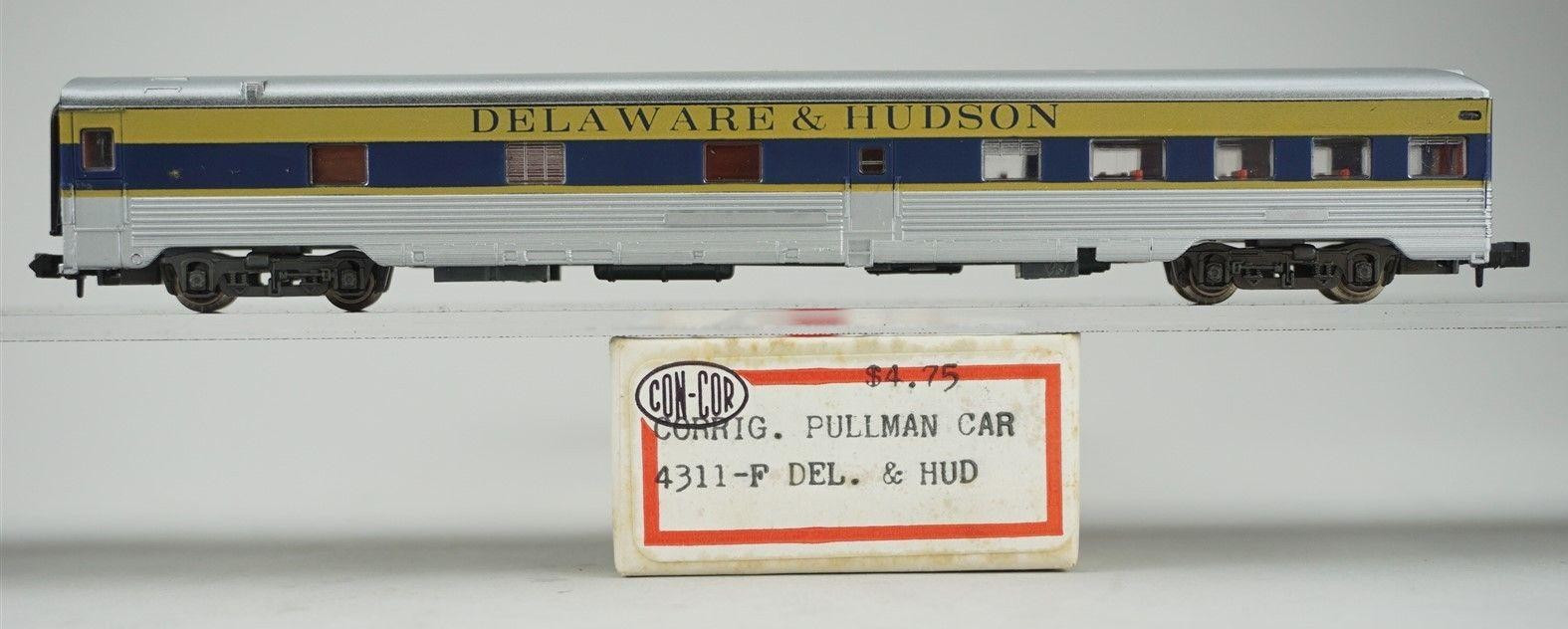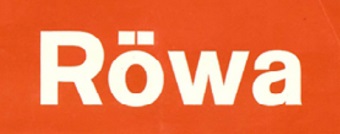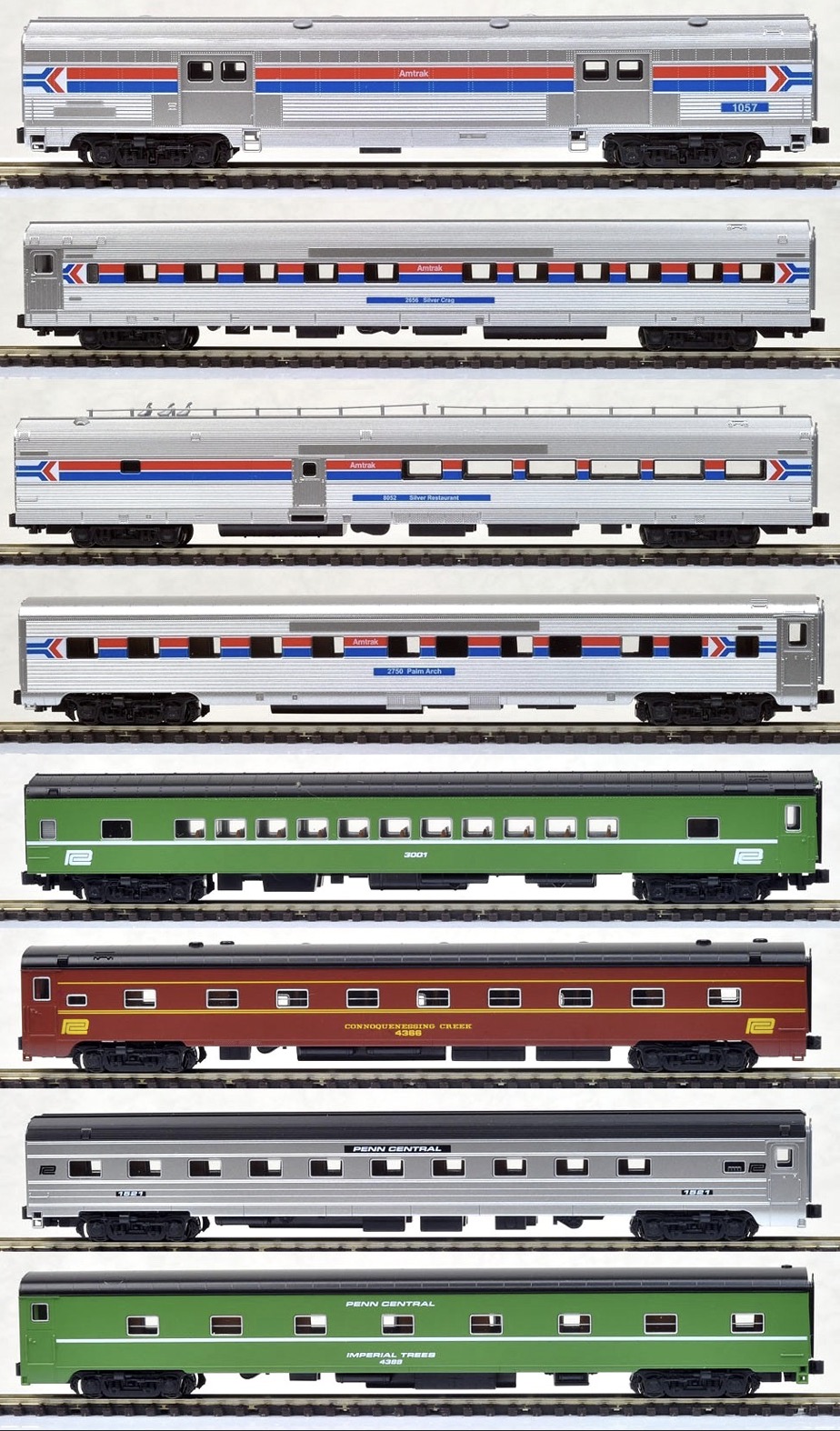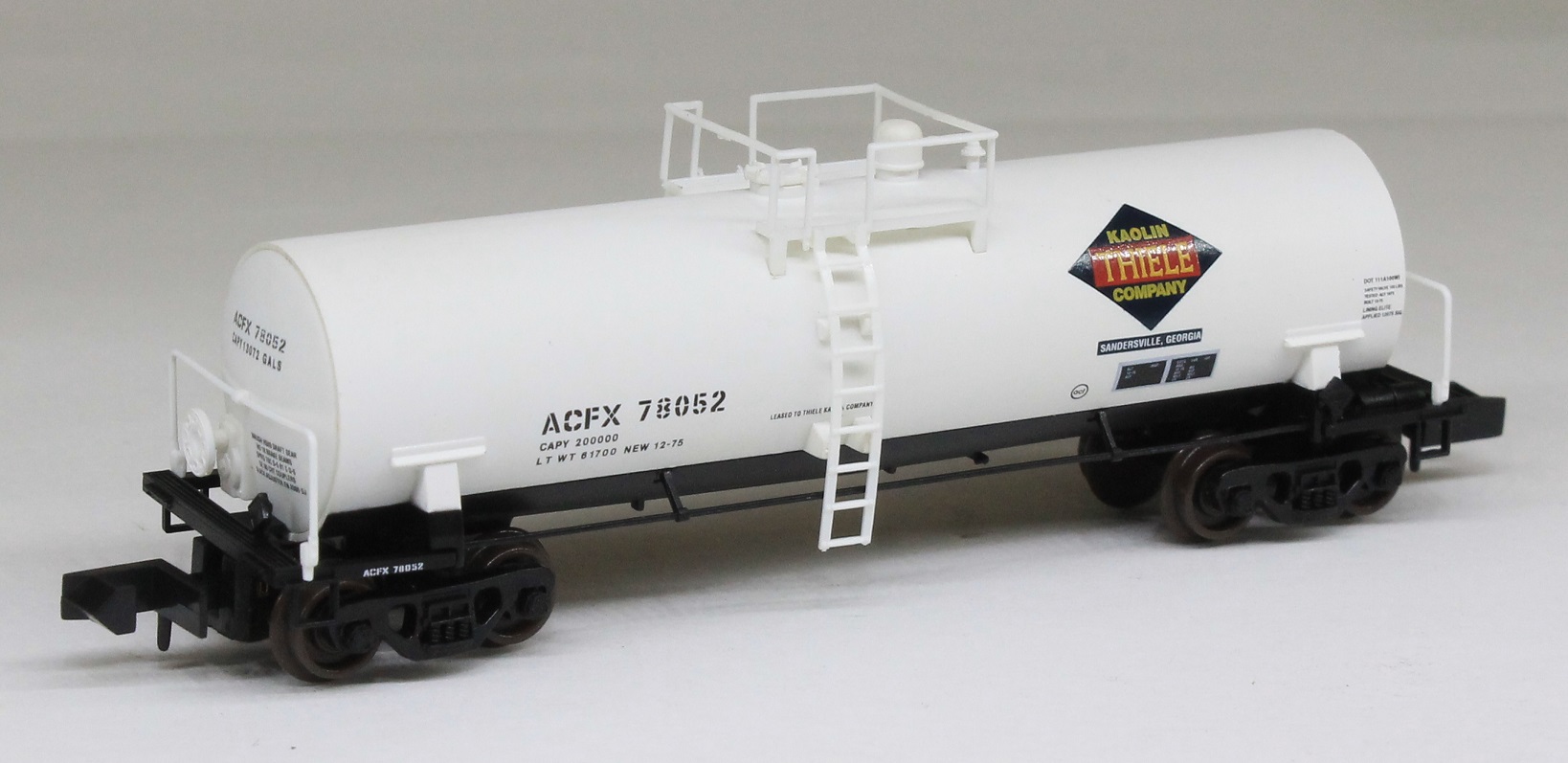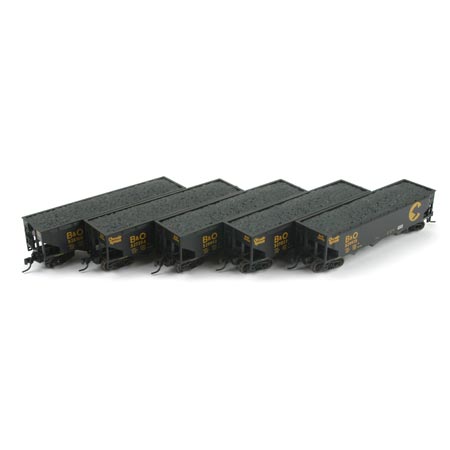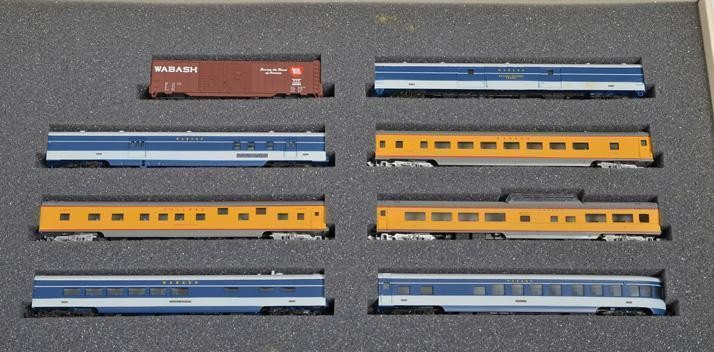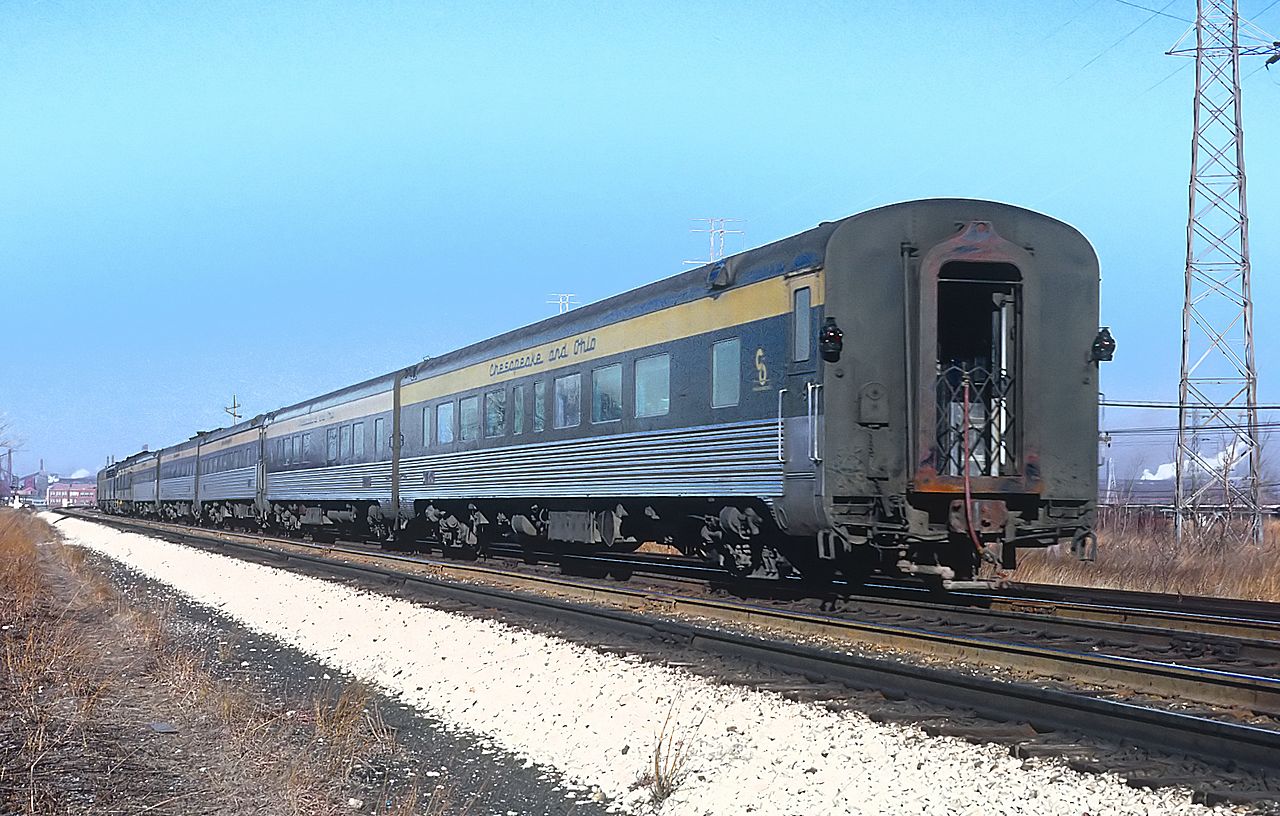Model Information: These cars were originally manufactured for MRC by Röwa (Germany) in the end 1960s-early 1970s. Röwa also sold them under its own brand. Post-MRC, Con-Cor distributed them for a while under its brand name and attempted to acquire the tooling in order to set up production of these cars at Rivarossi. However, said tooling was eventually lost (or confiscated) and these models subsequently vanished from the face of the earth. They have metal window frames, close-coupling, diaphragms and venetian blinds in the windows. Some come equipped with interior lighting.
This model was made after the Pullman 10-roomette/6-bedroom sleeper built for the C&O in 1950.
This model was made after the Pullman 10-roomette/6-bedroom sleeper built for the C&O in 1950.
Prototype History: The Pullman built cars ordered by Chesapeake & Ohio (C&O) after WWII were semi-corrugated, i.e. corrugated on the lower half, but smooth on the upper half and roof.
Some of these cars ended up on a few other railroads because C&O backed away from their plans for expanding their service putting the excess cars on the market. D&RGW took some of the sleepers and some of the blunt end observation cars ended up on the B&O. Two of the coaches wound up on the SP. But C&O had some or of all of them so that would be the road to decorate them in. Note that the Pere Marquette, Nickel Plate, and other road's semi-corrugated cars look like the C&O cars but actually have more corrugations under the windows and so are not an exact match.
Coach: The car is in two sections divided in the center. Fifty-nine coaches in the 1610-1668 series were delivered to the C&O by Pullman in 1950 for service on most C&O trains, including the George Washington. Eight of these cars were sold to the D&RGW. C&O removed the corrugations in 1967.
Sleeper: This is the Pullman 85' 10-roomette/6-bedroom sleeper built for the C&O in 1950 in the “City of…” series, and 56 were made. Some C&O cars were used on the Pere Marquette. Cars were also sold to ACL, B&O, D&RGW and IC. The Nickel Plate also bought 13 of these 10/6 cars new in 1950 from PS, also named “City of…”.
Observation: This is the Pullman 85’ 5 double bedroom, buffet, 26-seat lounge, blunt end observation car (floor plan 4165) built for the C&O in 1950. Eight cars were built in the “Club” series and used on several trains by the C&O. Some of the C&O cars were modified for mid-train operation. Some were later sold to the B&O, who used them on the Capitol Limited.
Some of these cars ended up on a few other railroads because C&O backed away from their plans for expanding their service putting the excess cars on the market. D&RGW took some of the sleepers and some of the blunt end observation cars ended up on the B&O. Two of the coaches wound up on the SP. But C&O had some or of all of them so that would be the road to decorate them in. Note that the Pere Marquette, Nickel Plate, and other road's semi-corrugated cars look like the C&O cars but actually have more corrugations under the windows and so are not an exact match.
Coach: The car is in two sections divided in the center. Fifty-nine coaches in the 1610-1668 series were delivered to the C&O by Pullman in 1950 for service on most C&O trains, including the George Washington. Eight of these cars were sold to the D&RGW. C&O removed the corrugations in 1967.
Sleeper: This is the Pullman 85' 10-roomette/6-bedroom sleeper built for the C&O in 1950 in the “City of…” series, and 56 were made. Some C&O cars were used on the Pere Marquette. Cars were also sold to ACL, B&O, D&RGW and IC. The Nickel Plate also bought 13 of these 10/6 cars new in 1950 from PS, also named “City of…”.
Observation: This is the Pullman 85’ 5 double bedroom, buffet, 26-seat lounge, blunt end observation car (floor plan 4165) built for the C&O in 1950. Eight cars were built in the “Club” series and used on several trains by the C&O. Some of the C&O cars were modified for mid-train operation. Some were later sold to the B&O, who used them on the Capitol Limited.
Road Name History:  The Delaware and Hudson Canal Company would found the Delaware and Hudson Railway to support its mission of getting fuel to the timber denuded cities of the northeast when it was discovered that 'rock coal' or Anthracite could be burned successfully. In time the railway eclipsed the parent company, and America's brief canal age would be ended by the availability of more powerful traction locomotives, so today the canal is little known. Today the Delaware and Hudson Railway (reporting mark DH) is again a subsidiary railroad that operates in the northeastern United States. Since 1991 it was owned and operated by the Canadian Pacific Railway under the rail subsidiary Soo Line Corporation also controls the Soo Line Railroad, Canadian Pacific Railway is owned by Canadian Pacific Railway Limited.
The Delaware and Hudson Canal Company would found the Delaware and Hudson Railway to support its mission of getting fuel to the timber denuded cities of the northeast when it was discovered that 'rock coal' or Anthracite could be burned successfully. In time the railway eclipsed the parent company, and America's brief canal age would be ended by the availability of more powerful traction locomotives, so today the canal is little known. Today the Delaware and Hudson Railway (reporting mark DH) is again a subsidiary railroad that operates in the northeastern United States. Since 1991 it was owned and operated by the Canadian Pacific Railway under the rail subsidiary Soo Line Corporation also controls the Soo Line Railroad, Canadian Pacific Railway is owned by Canadian Pacific Railway Limited.
The name itself originates from the 1823 New York state corporation charter listing the unusual name of "The President, Managers and Company of the Delaware & Hudson Canal Co." authorizing an establishment of "water communication" between the Delaware River and the Hudson River.
Nicknamed "The Bridge Line to New England and Canada," the D&H helped connect New York with Montreal, Quebec and New England. It called itself "North America's oldest continually operated transportation company." Between 1968 & 1984, the D&H was owned by Norfolk & Western. N&W sold it to Guilford Transportation, who cast it into bankruptcy in 1988 and in 1991, the D&H was purchased by Canadian Pacific Railway (CP).
On September 19, 2015, Norfolk Southern Railway assumed control and began operations of their recently acquired Delaware & Hudson "South Line", the 282 miles from Schenectady, New York to Sunbury, Pennsylvania from CP. The Delaware & Hudson "South Line" is a rail route that now consists of three rail lines, the Sunbury Line, the Freight Line, and the Voorhesville Running Track; the Sunbury Line absorbed the original route of the Delaware, Lackawanna and Western Railroad main line which contains the Nicholson Cutoff during that rail line's history.

The name itself originates from the 1823 New York state corporation charter listing the unusual name of "The President, Managers and Company of the Delaware & Hudson Canal Co." authorizing an establishment of "water communication" between the Delaware River and the Hudson River.
Nicknamed "The Bridge Line to New England and Canada," the D&H helped connect New York with Montreal, Quebec and New England. It called itself "North America's oldest continually operated transportation company." Between 1968 & 1984, the D&H was owned by Norfolk & Western. N&W sold it to Guilford Transportation, who cast it into bankruptcy in 1988 and in 1991, the D&H was purchased by Canadian Pacific Railway (CP).
On September 19, 2015, Norfolk Southern Railway assumed control and began operations of their recently acquired Delaware & Hudson "South Line", the 282 miles from Schenectady, New York to Sunbury, Pennsylvania from CP. The Delaware & Hudson "South Line" is a rail route that now consists of three rail lines, the Sunbury Line, the Freight Line, and the Voorhesville Running Track; the Sunbury Line absorbed the original route of the Delaware, Lackawanna and Western Railroad main line which contains the Nicholson Cutoff during that rail line's history.
Brand/Importer Information: Con-Cor has been in business since 1962. Many things have changed over time as originally they were a complete manufacturing operation in the USA and at one time had upwards of 45 employees. They not only designed the models,but they also built their own molds, did injection molding, painting, printing and packaging on their models.
Currently, most of their manufacturing has been moved overseas and now they import 90% of their products as totally finished goods, or in finished components. They only do some incidental manufacturing today within the USA.
Important Note: The Con-Cor product numbering can be very confusing. Please see here in the article how to properly enter Con-Cor stock numbers in the TroveStar database.
Currently, most of their manufacturing has been moved overseas and now they import 90% of their products as totally finished goods, or in finished components. They only do some incidental manufacturing today within the USA.
Important Note: The Con-Cor product numbering can be very confusing. Please see here in the article how to properly enter Con-Cor stock numbers in the TroveStar database.
Manufacturer Information: Röwa was founded in 1961 by Willy Ade and Horst Röchling, the company name being an acronym of their combined names. For several years, much of Röwa’s energies were directed toward developing products for other model train manufacturers, notably Trix of Germany and, on occasion, Roco of Austria.
Production of model trains under the Röwa name began in the late 1960’s, ca. 1968. Much of the company’s products were in H0-Scale, but there was some interesting production in N-Scale.
The Röwa American-prototype N-Scale items were marketed in the United States by Model Rectifier Corporation (MRC) for a period of a few years. Both the locomotives and passenger cars were subsequently marketed by other companies in successive years. For example, Brawa and Con-Cor marketed the N&W Y-6b Mallet-type, and the Berkshire may have also been marketed in the same way. Con-Cor owned the passenger car tooling for a period of time, producing until the die-molds went out of production tolerances.
Röwa ended production around 1974 and the manufacturing tools and dies used to produce the trains were sold to other companies.
From this website.
Production of model trains under the Röwa name began in the late 1960’s, ca. 1968. Much of the company’s products were in H0-Scale, but there was some interesting production in N-Scale.
The Röwa American-prototype N-Scale items were marketed in the United States by Model Rectifier Corporation (MRC) for a period of a few years. Both the locomotives and passenger cars were subsequently marketed by other companies in successive years. For example, Brawa and Con-Cor marketed the N&W Y-6b Mallet-type, and the Berkshire may have also been marketed in the same way. Con-Cor owned the passenger car tooling for a period of time, producing until the die-molds went out of production tolerances.
Röwa ended production around 1974 and the manufacturing tools and dies used to produce the trains were sold to other companies.
From this website.
Item created by: gdm on 2017-02-11 18:26:54. Last edited by gdm on 2020-12-23 07:41:25
If you see errors or missing data in this entry, please feel free to log in and edit it. Anyone with a Gmail account can log in instantly.
If you see errors or missing data in this entry, please feel free to log in and edit it. Anyone with a Gmail account can log in instantly.


